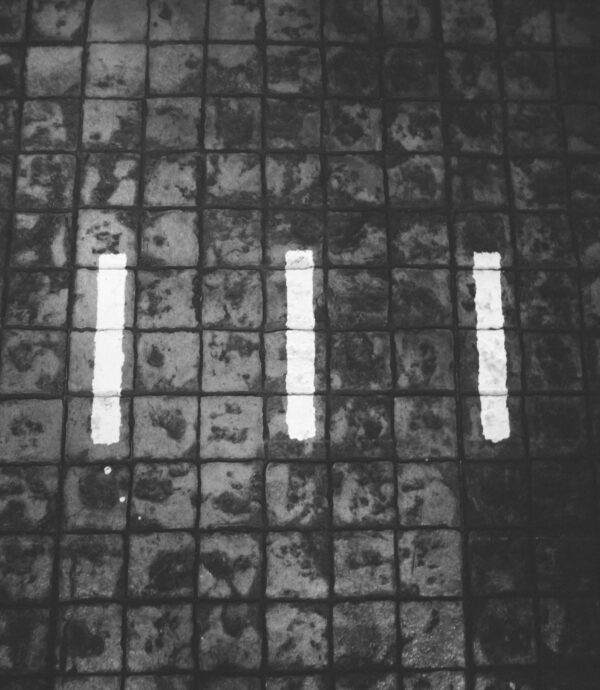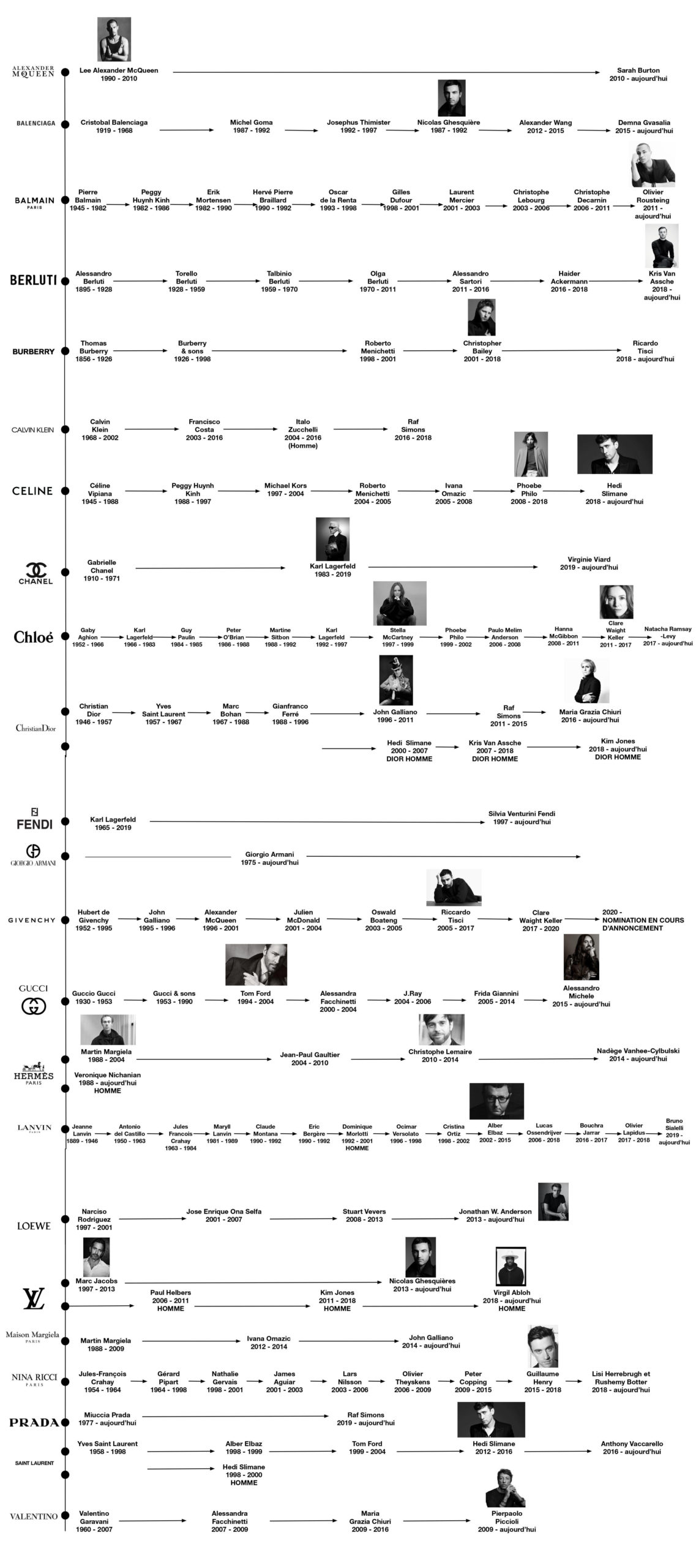& their Artistic Direction
A quick history of Artistic Directions in the major fashion houses
The movements that have marked the history of fashion houses are often embodied by their change of Artistic Directors, who breathe new life into the collections but also sometimes into the positioning and identity of the brand they represent. We wanted to compile and visually represent the historical evolution of the Artistic Directors of a selection of major houses, in order to try to pick up the weak signals and to better identify the recruitment strategies for these exceptional profiles. Through this panorama, we can guess singular rhythms and strategies, but also beyond that, markers of the evolution of the fashion industry and the role of the Artistic Director.
The historical movements observed can be explained by several reasons, among others :
- The departure or sometimes death of an iconic Artistic Director who is an integral part of the company’s history
- The purchase of the house by a player who wants to give it a new impetus and thus meet an ambitious commercial strategy.
- A drop in brand awareness that calls for a fresh look to rework a new positioning and/or reach a new audience.
- – Alignment with a strategy that has proven successful in other houses…

These movements will result in multiple variations according to the historical context and the ambitions of the house
- Rare changes because the house is embodied by an iconic talent, recruitment of a trusted in-house talent for the position of Artistic Director following the departure or death of the brand’s historic creator.
- Recruitment every ten years or so of renowned Artistic Directors with a personal DNA that is often very assertive/incarnate and who have already produced “it-products”, in other words: made an impact in other houses.
- Very regular changes to breathe a frequent renewal of the brand (desired rhythm or unfortunately sometimes endured)
- Changes accompanying the new era and the arrival of a new management team that wishes to leave its mark on the history of the company
- Taking very occasional risks with the recruitment of Artistic Directors who are unknown to the general public or who do not come from the fashion industry or sometimes even have a background in product design/styling.
- Risks that result in failures and are followed by a return to in-house or known talents.
Analyzing these unique movements and putting them into perspective with the different practices of the major companies can help anticipate needs and imagine future recruitment (or monitoring) strategies.
Moreover, they are important markers of the evolution of sometimes (often) societal issues (cf: Virgil Abloh for Louis Vuitton, Rihanna and Fenty, Olivier Rousteing for Balmain among others…) and also of the role linked to the function of artistic director, which deserve to be deciphered.
The evolution of the strategic and business stakes of the function of artistic director
As history shows, changes in Artistic Direction frequently coincide with a major brand repositioning, a change of target, or the acquisition of the house by a group that leads decision-makers to review the brand’s commercial strategy.
The stakes of the Art Director’s function then go far beyond the creative and stylistic aspect and are part of a global business strategy that they can no longer afford to ignore.
These changes are rarely insignificant and the brands have clearly understood this: the artistic risk taking (very real in the end, by the way!) following the recruitment of John Galliano at Christian Dior resulted in a real revolution and a commercial success that inspired many other houses later on.
Some of them, who were initially rather timid, wanted to boost their recruitment to breathe new life into the company in order to better meet the expectations of the public.
The recruitment of a new Artistic Director then became the best way to boost sales and develop a positioning. This practice was then generalized in the industry with the permanent demand for renewal that characterizes our time, and which resulted in accelerating these movements in the industry.
Today, however, the pace is tending to slow down with the recruitment of influential personalities on whom the brand is becoming almost dependent, such as Olivier Rousteing at Balmain, for example. After several years of frequent turnover, brands are now looking for candidates capable of taking the brand’s Artistic Direction over the long term and at 360°.
The evolution of the role of the Artistic Director
Movements in the major fashion houses seem to have accompanied the evolution of the role of the artistic director. Indeed, over the years his function has become more complex and global: it no longer stops at the design of the collections but must encompass the development and execution of the entire creative vision for the brand. Thus today it integrates everything that embodies the brand: from the design of major advertising campaigns to social-media and point-of-sale strategies.
The role of the Art Director has gradually evolved with the aim of bringing the brand into resonance with its clients and capturing a new audience. Today, this evolution has reached its peak with the reign of social networks, to the point that some houses are recruiting creative talents who have not necessarily evolved in the fashion world or who do not have a great deal of experience there to take over the brand’s Artistic Direction.
This evolution has largely dictated recruitment in recent years: for example, Olivier Rousteing, since his appointment as Artistic Director at Balmain at the age of 25, has been responsible for the brand’s vision and its execution, particularly on social networks and in particular on Instagram, where the house has more than 10 million subscribers. As for him, he has more than 6 million subscribers and is largely responsible for the brand’s positioning and current success.
What might have been missing in terms of experience, he has brilliantly remedied by putting his genius, digital-nativeness, personality, commitment and highly contagious passion to work for Balmain’s DNA. His appointment was in fact emblematic of an evolution in the way art directors have been (and will be) chosen.
In the history of the major Artistic Directors and ready-to-wear and couture houses, there are as many possible scenarios as there are houses, since one can never really exempt these major movements from the economic context, the personalities of the creators and the history of the brand.
Nevertheless, it is interesting to observe certain strong trends in the evolution of the function, in particular the recruitment of young talents, little known to the public, or sometimes already very exposed in other spheres (cultural, digital…), embodied, solo, almighty or collective.
Some beautiful stories remind us above all that nothing is impossible when talent and will meet.

